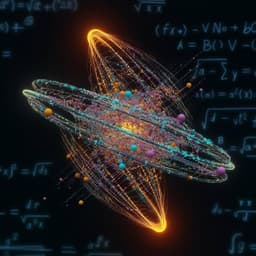
Engineering and Technology
SRS-Net: a universal framework for solving stimulated Raman scattering in nonlinear fiber-optic systems by physics-informed deep learning
Y. Song, M. Zhang, et al.
Discover how SRS-Net, a groundbreaking physics-informed neural network framework, revolutionizes stimulated Raman scattering (SRS) in fiber-optic systems. Developed by Yuchen Song, Min Zhang, Xiaotian Jiang, Fan Zhang, Cheng Ju, Shanguo Huang, Alan Pak Tao Lau, and Danshi Wang, this innovation promises two orders of magnitude faster solutions, enhancing the accuracy and versatility of SRS problem-solving. Join us in exploring this exciting leap in optical technology!
~3 min • Beginner • English
Related Publications
Explore these studies to deepen your understanding of the subject.







